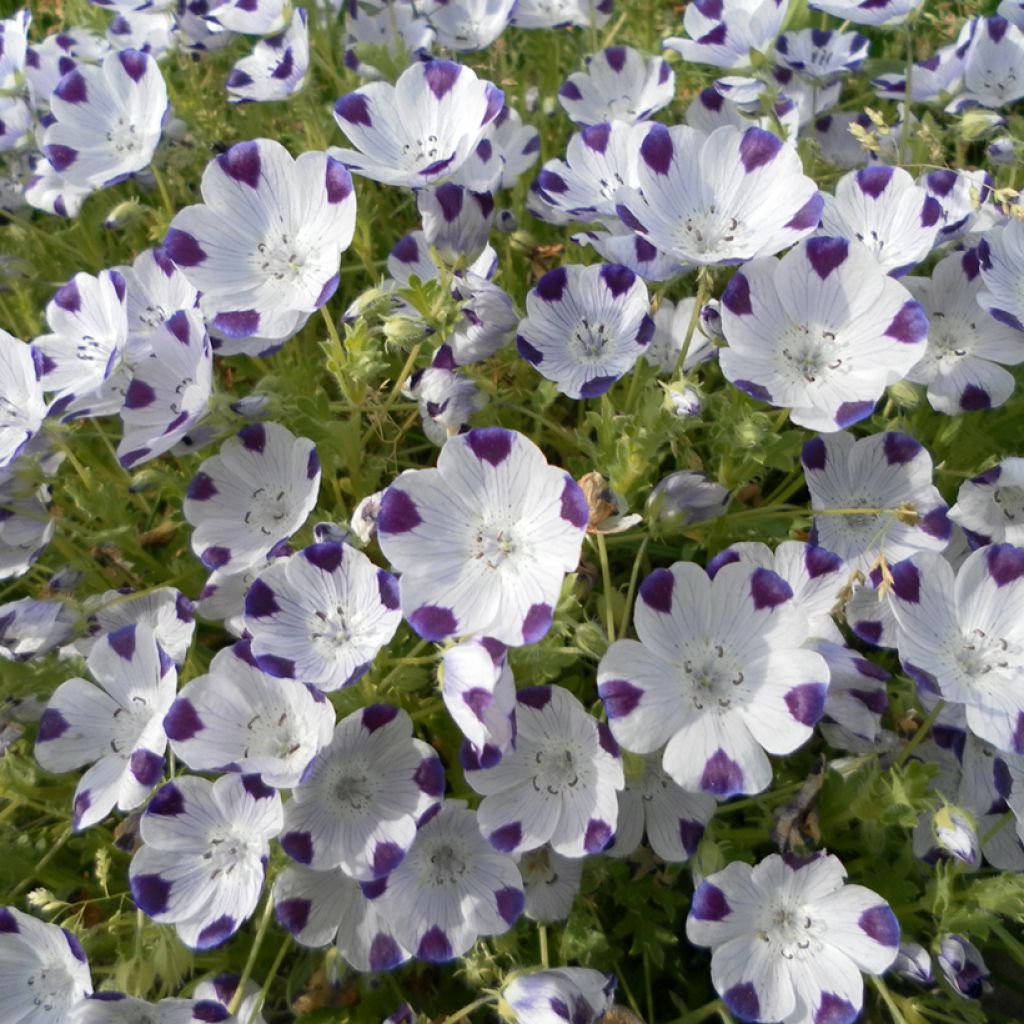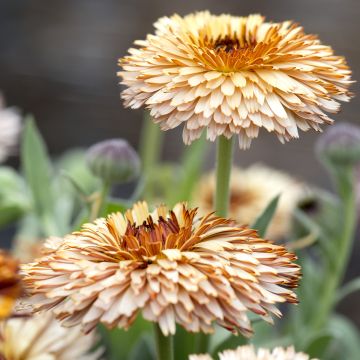

Five Spot Spotty Seeds - Nemophila maculata
Five Spot Spotty Seeds - Nemophila maculata
Nemophila maculata Spotty
Buffalo Eyes
I will never buy seeds from PDF again, consistent and resounding failure.
Laude, 16/05/2020
Special offer!
Receive a €20 voucher for any order over €90 (excluding delivery costs, credit notes, and plastic-free options)!
1- Add your favorite plants to your cart.
2- Once you have reached €90, confirm your order (you can even choose the delivery date!).
3- As soon as your order is shipped, you will receive an email containing your voucher code, valid for 3 months (90 days).
Your voucher is unique and can only be used once, for any order with a minimum value of €20, excluding delivery costs.
Can be combined with other current offers, non-divisible and non-refundable.
Home or relay delivery (depending on size and destination)
Schedule delivery date,
and select date in basket
This plant carries a 6 months recovery warranty
More information
We guarantee the quality of our plants for a full growing cycle, and will replace at our expense any plant that fails to recover under normal climatic and planting conditions.
Would this plant suit my garden?
Set up your Plantfit profile →
Description
Nemophila maculata 'Spotty' is a small annual plant with a spreading, creeping habit, showing from summer to autumn ephemeral flowers that are like large, shining bowls whose white petals are veined and spotted at the tips with intense purple-blue colour. This plant develops and evergreen, divided, fleshy, medium green foliage. Moisture-loving and tolerant of partial shade, it is perfect in damp rockeries and in window boxes and pots from which its delicate flowers can be admired up close.
The Great American West is the cradle of Nemophila maculata, otherwise known as Five Spot or Buffalo Eyes. This small annual, sometimes biennial of the borage family, can be found in California, Oregon and in Utah. It prospers in the moist, shady valleys and humus-rich undergrowth of these regions, up to 1000 m altitude. The 'Spotty' variety from which it originates, quickly forms small, spreading, more or less prostrate clumps that do not exceed 15 to 20 cm in height and in breadth. It is distinguished by its long flowering period, lasting from July to October, in the form of ephemeral flowers that are continuously renewed above a very divided, fleshy, ciliate, medium green foliage. Its bright corollas are made up of 5 white petals arranged in a campanulate bowl-shape, each of which is marked with purple-blue veins and a rounded dot of the same dark, bright hue, located on its tip. The flowers give way to small capsules that contain blond seeds.
Five Spots are ideal groundcovers for making borders and flowering carpets in rockeries, in the front of planted beds or in the shade of trees and shrubs, in moist soils or simply for decorating basins and flower pots that can be admired up close. They can be planted with Corydalis, plants that also like cool areas and partial shade, or with Limnanthes, in the sun.
The spots that give Nemophila maculata its vernacular name have been selected but the natural evolutionary process to attract its primary pollinators which are solitary bees. Both male and female bees feed on the nectar and the females collect the pollen in order to feed their larvae.
Report an error about the product description
Flowering
Foliage
Plant habit
Botanical data
Nemophila
maculata
Spotty
Boraginaceae
Buffalo Eyes
North America
Other Baby-blue Eyes seeds
View all →Planting and care
Sow Nemophila seeds directly outdoors in April-March, making sure to bury them not too deep. After the seedling emergence, that takes usually 15 days at 16°C, thin out and remove bad weeds. Keep the soil moist by watering regularly. You can also sow Nemophilas in September, in a well-exposed and sheltered nursery. Five Spot accepts shade. In case of harsh cold weather, make sure to protect the seedlings with conifer branches for example. Plant them out in spring.
Culture:
These fast-growing annuals develop better in sun or partial shade in a humus-rich soil that is moist all throughout the year, especially in summer, in order to sustain flowering. Their tender and brittle foliage means that they should be planted in protected sites, not too close to passageways. Cats seem to particularly like to lie down on these plants. Growing them in pots or window boxes is a good way to enjoy them up close and for a longer time.
Sowing period
Intended location
-
, onOrder confirmed
Reply from on Promesse de fleurs
Similar products
Haven't found what you were looking for?
Hardiness is the lowest winter temperature a plant can endure without suffering serious damage or even dying. However, hardiness is affected by location (a sheltered area, such as a patio), protection (winter cover) and soil type (hardiness is improved by well-drained soil).

Photo Sharing Terms & Conditions
In order to encourage gardeners to interact and share their experiences, Promesse de fleurs offers various media enabling content to be uploaded onto its Site - in particular via the ‘Photo sharing’ module.
The User agrees to refrain from:
- Posting any content that is illegal, prejudicial, insulting, racist, inciteful to hatred, revisionist, contrary to public decency, that infringes on privacy or on the privacy rights of third parties, in particular the publicity rights of persons and goods, intellectual property rights, or the right to privacy.
- Submitting content on behalf of a third party;
- Impersonate the identity of a third party and/or publish any personal information about a third party;
In general, the User undertakes to refrain from any unethical behaviour.
All Content (in particular text, comments, files, images, photos, videos, creative works, etc.), which may be subject to property or intellectual property rights, image or other private rights, shall remain the property of the User, subject to the limited rights granted by the terms of the licence granted by Promesse de fleurs as stated below. Users are at liberty to publish or not to publish such Content on the Site, notably via the ‘Photo Sharing’ facility, and accept that this Content shall be made public and freely accessible, notably on the Internet.
Users further acknowledge, undertake to have ,and guarantee that they hold all necessary rights and permissions to publish such material on the Site, in particular with regard to the legislation in force pertaining to any privacy, property, intellectual property, image, or contractual rights, or rights of any other nature. By publishing such Content on the Site, Users acknowledge accepting full liability as publishers of the Content within the meaning of the law, and grant Promesse de fleurs, free of charge, an inclusive, worldwide licence for the said Content for the entire duration of its publication, including all reproduction, representation, up/downloading, displaying, performing, transmission, and storage rights.
Users also grant permission for their name to be linked to the Content and accept that this link may not always be made available.
By engaging in posting material, Users consent to their Content becoming automatically accessible on the Internet, in particular on other sites and/or blogs and/or web pages of the Promesse de fleurs site, including in particular social pages and the Promesse de fleurs catalogue.
Users may secure the removal of entrusted content free of charge by issuing a simple request via our contact form.
The flowering period indicated on our website applies to countries and regions located in USDA zone 8 (France, the United Kingdom, Ireland, the Netherlands, etc.)
It will vary according to where you live:
- In zones 9 to 10 (Italy, Spain, Greece, etc.), flowering will occur about 2 to 4 weeks earlier.
- In zones 6 to 7 (Germany, Poland, Slovenia, and lower mountainous regions), flowering will be delayed by 2 to 3 weeks.
- In zone 5 (Central Europe, Scandinavia), blooming will be delayed by 3 to 5 weeks.
In temperate climates, pruning of spring-flowering shrubs (forsythia, spireas, etc.) should be done just after flowering.
Pruning of summer-flowering shrubs (Indian Lilac, Perovskia, etc.) can be done in winter or spring.
In cold regions as well as with frost-sensitive plants, avoid pruning too early when severe frosts may still occur.
The planting period indicated on our website applies to countries and regions located in USDA zone 8 (France, United Kingdom, Ireland, Netherlands).
It will vary according to where you live:
- In Mediterranean zones (Marseille, Madrid, Milan, etc.), autumn and winter are the best planting periods.
- In continental zones (Strasbourg, Munich, Vienna, etc.), delay planting by 2 to 3 weeks in spring and bring it forward by 2 to 4 weeks in autumn.
- In mountainous regions (the Alps, Pyrenees, Carpathians, etc.), it is best to plant in late spring (May-June) or late summer (August-September).
The harvesting period indicated on our website applies to countries and regions in USDA zone 8 (France, England, Ireland, the Netherlands).
In colder areas (Scandinavia, Poland, Austria...) fruit and vegetable harvests are likely to be delayed by 3-4 weeks.
In warmer areas (Italy, Spain, Greece, etc.), harvesting will probably take place earlier, depending on weather conditions.
The sowing periods indicated on our website apply to countries and regions within USDA Zone 8 (France, UK, Ireland, Netherlands).
In colder areas (Scandinavia, Poland, Austria...), delay any outdoor sowing by 3-4 weeks, or sow under glass.
In warmer climes (Italy, Spain, Greece, etc.), bring outdoor sowing forward by a few weeks.











































